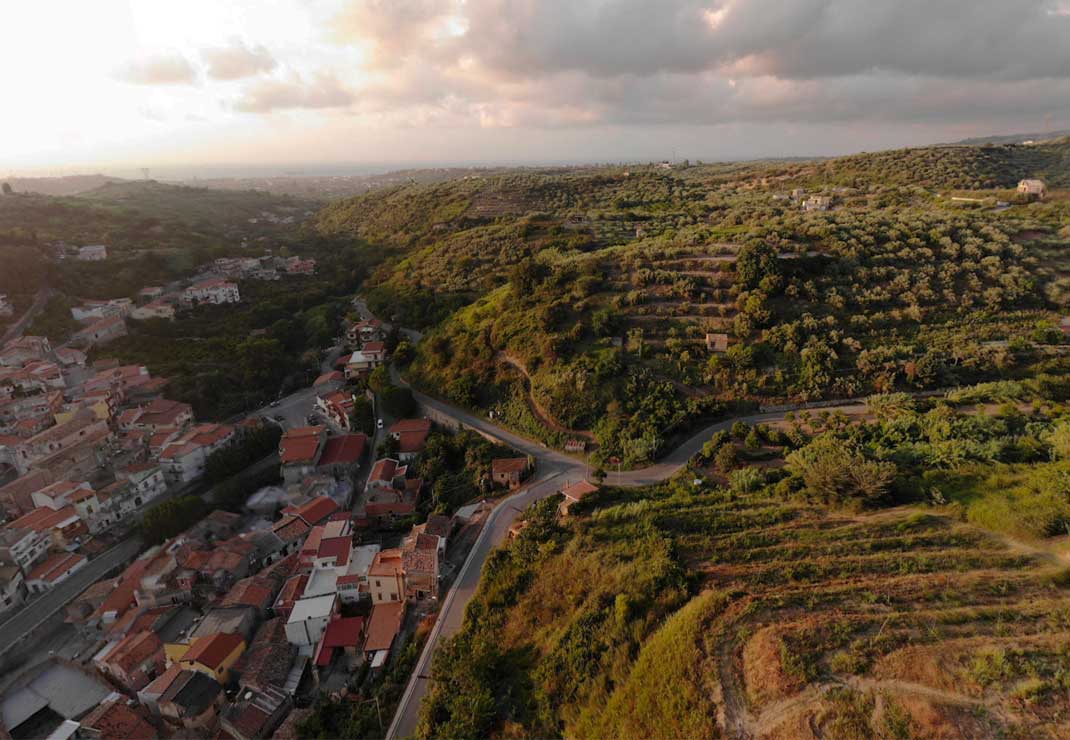
At the beginning of the slopes of the Peloritani mountains, in a scenic valley, lies the ancient tiny village of Condrò.
Due to its extension and approximately five hundred residents, it is one of the smaller towns in Eastern Sicily.
The history of the village of Condrò
Etymologically speaking, the name of Condro could come from Greek chondros, i.e. grain, and therefore it is assumed that it dates back to the period of the Hellenic colonization of Sicily. However, the name is certified in an official documentation of theSwabian era dating from the mid-XNUMXth century when it appears as Casale di Condrò.
It is the formalization of a land sale that the then owners Orlano and Margherita di Paternò sell, for 400 tarì, some properties located in the Milazzo Plain, including the Casale di Condrò, to Bartolotto Marescalco from Messina. From the documents, therefore, it can be deduced that the territory of Condro did not belong to any fief but it was privately owned.
The new owners remained such for some time, as evidenced by a sentence issued by the Grand Court in the mid-XNUMXth century against the heirs of Rodrigo Alagona who evidently opposed the Marescalco family.
Only at the beginning of the XNUMXth century did the census commissioned by King Martino specify that Condrò belongs to Isolda di Scala who in turn ceded it to a certain Castagna until, finally becoming feudal territory, Condrò passed to Giovanni Bonfiglio and the his descendants at the behest of Alfonso of Aragon.
Things to do in Condro
The ease of reaching the town via the Messina-Palermo motorway or with the SS 113 puts the tourist in the condition of visit Condrò and, perhaps, choose it as a base for their stay thanks to the tranquility and the beauties present.
The central Piazza Umberto I is characterized by the view of the small one church of Santa Caterina, no longer used for religious services, from the remains of a noble palace and from the sixteenth century Mother Church dedicated to the Madonna del Tindari, also called Cathedral of Condro. Although the severe style seems to be too harsh even if it has precious portals, the interior amazes the visitor because of the finely worked ornamental stuccos, from the wooden choir of the time, from a beautiful pulpit and from the sixteenth-century lacunars that distinguish the ceiling in the center there is a niche in which there is an image of the Coronation of the Virgin Mary.
Also noteworthy is the gilded wooden altarpiece in pure Baroque style and the statue of the Madonna del Tindari as well as a Gothic-style censer also dating back to the sixteenth century.
The sculptures that find space inside the nave and dating back to a period that embraces the seventeenth and eighteenth centuries are beautiful, among which the seventeenth-century terracotta oval stands out which represents the Madonna with Child and Sant'Anna. Also to be admired are the wooden crucifix and the colored terracotta bust depicting St. Francis of Paola.
At the end of the visit, it is suggested that you continue to explore Condrò by immersing yourself in the narrow streets that lead to what was once the Chancellery which ceased its role only at the beginning of the last century.
In the surroundings of Condrò it is possible to see the ruins of an ancient convent founded by the friars in the XNUMXth century.
Food and wine tourism in Condrò
The interest it can arouse is important food and wine tourism since this territory is characterized by numerous hills planted with vineyards, citrus and various orchards.
Well known – and not only locally – is the variety of Rapisarda apricots which turn out to be so fragrant as to have motivated the production of a more than good one brandy.
Even those who appreciate good drinking can refer to Condrò because of the production of some highly prized wines among which emerges the Mamertino DOC so much so that in recent years, in addition to the traditional event linked to the feast of San Vito, the patron saint of the town, there have also been other kermesses linked to the enhancement of typical local products.
For example, the last Sunday of July sees scheduled the Bread and Wine Festival where, tourists and visitors have the opportunity to taste the best production of local wines e taste bread handcrafted according to ancient recipes that require it to be cooked only in a wood-burning oven. The same bread that can be tasted, both sweet and savory during the Bruschetta Festival, which takes place on August 14 every year.
Those looking for a location where they can unwind and escape from daily stress, the Condrò wine cellars they are ideal suggestions to be taken into consideration to taste excellent wines and breathe the air of a time that does not foresee infernal rhythms but only a different quality of life.









